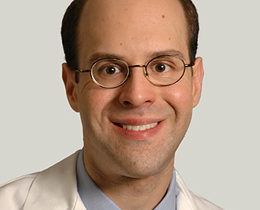Difficulty swallowing is a particularly troubling digestive disease symptom with myriad causes. Often, patients suffer for years, adapting their behavior to contend with the sensation of food sticking in their throat or esophagus as they eat, eating a limited diet and eating slowly to allow food to transit the esophagus. Difficulty swallowing is called dysphagia, and these symptoms are a central treatment focus of the Center for Esophageal Diseases at the University of Chicago Medicine Digestive Diseases Center.
“When patients have difficulty swallowing, it significantly affects their quality of life. They learn to avoid certain foods that become stuck. Treating patients’ dysphagia is always about resolving those symptoms, and avoiding food impaction,” explains Robert Kavitt, MD, MPH, Associate Professor of Medicine and Director of the Center for Esophageal Diseases. Dr. Kavitt is the editor of the 2020 reference text Evaluation and Management of Dysphagia: An Evidence-Based Approach, as well as is the author of numerous articles in the medical literature including the recently published American College of Gastroenterology guidelines regarding the diagnosis and management of achalasia.
An inflammatory disorder called eosinophilic esophagitis (EoE) is a relatively newly characterized disease that is a frequent cause of dysphagia. The Center for Esophageal Diseases is a referral center for the diagnosis and treatment of this disease. This involves identification of patients’ symptoms, confirmation of the diagnosis with endoscopy, and verification of the disease under the microscope.
Fortunately, once identified, EoE is treatable, and with treatment, patients do achieve remission.
The cause of EoE is often an undiagnosed food trigger or food allergy, not always apparent in lab tests for allergies and intolerances. Dr. Kavitt notes that the incidence rate of EoE correlates with the significant increase in food allergies within the population, and that it is most common among people with seasonal allergies or asthma.
As part of their treatment plan, EoE patients meet with Dr. Kavitt and a registered dietitian to outline an elimination diet to identify the triggering food. Other parts of the treatment regimen include medications like proton pump inhibitors (e.g., omeprazole), and swallowed corticosteroid medications to reduce inflammation.
“Unfortunately, EoE is a chronic condition,” says Dr. Kavitt, “but we are very successful at keeping it in remission with medication and the continued avoidance of dietary triggers. Difficulty swallowing can happen, but it can be treated.”

